Croatia - did you know?
ABOUT CROATIA
GEOGRAPHICAL POSITION
Croatia occupies the largest area of the eastern coast of the Adriatic Sea which, as a part of the Mediterranean Sea, penetrates deep into the European continent. The narrow Dinara Mountain Range separates the country’s Mediterranean region from its central European continental section, which spans from the easterly edges of the Alps in the North West to the shores of the Danube in the East, encompassing the southern part of the fertile Pannonian lowlands.
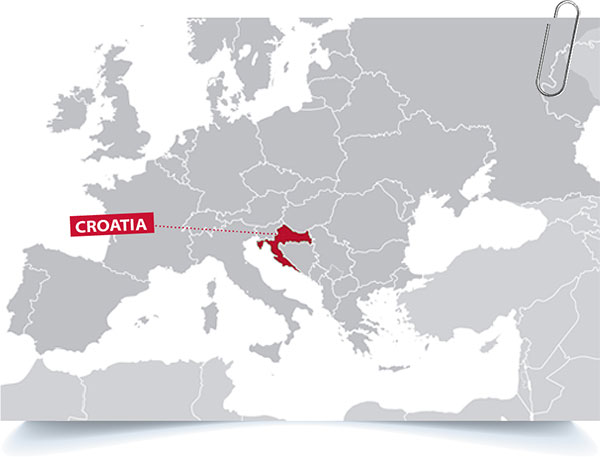
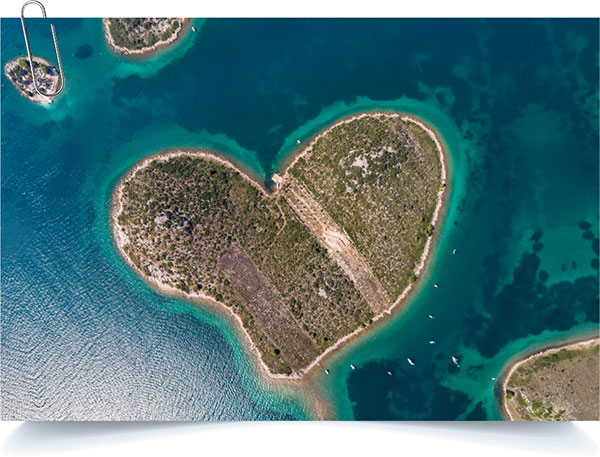
SURFACE
The mainland covers 56,542 km², and the surface of the territorial sea is 31,067 km².
POPULATION
4,437,460 inhabitants; composition of population: the majority of the population are Croats; national minorities are Serbs, Slovenes, Hungarians, Bosnians, Italians, Czechs and others. System of government: multi-party parliamentary republic.
CAPITAL
Zagreb (806.341 inhabitants, 2019.) is the economic, cultural, and academic centre of the country.
5,835 km of COASTLINE
A number of islands, solitary rocks and reefs comprise 4,058 km of coastline. There are 50 inhabited islands. The largest islands are Krk and Cres.
HIGHEST PEAK
Dinara: 1,831 m above sea level.
INTERESTING FACTS

THE NECKTIE
The cravat, a symbol of culture and elegance, is associated with Croatia. Croatian soldiers spread the cravat as an accessory across Europe in the 17th century. After that it became a necessary article of clothing, and still remains one.
Nikola Tesla (10 July 1856 – 7 January 1943) was a famous inventor, mechanical engineer, and electrical engineer. He was an important contributor to the birth of commercial electricity, and is best known for developing the modern alternating current (AC) electrical supply system. His many revolutionary developments in the field of electromagnetism in the late 19th and early 20th centuries were based on the theories of electromagnetic technology discovered by Michael Faraday. Tesla's patents and theoretical work also formed the basis of wireless communication and the radio.
Born in Smiljan village, part of the Military Frontier of the Austrian Empire (located in modern-day Croatia), Tesla was a subject of the Austrian Empire by birth and later became an American citizen.
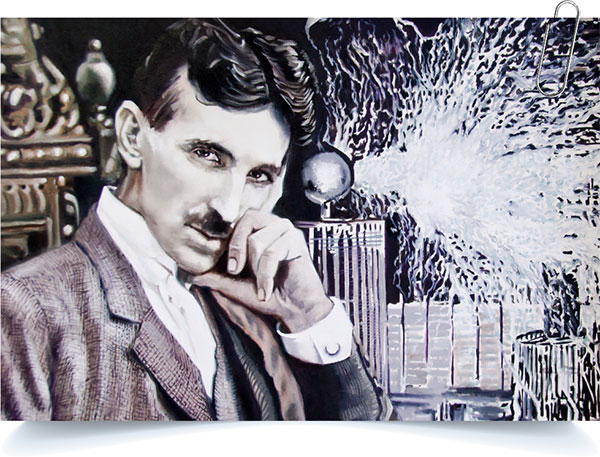
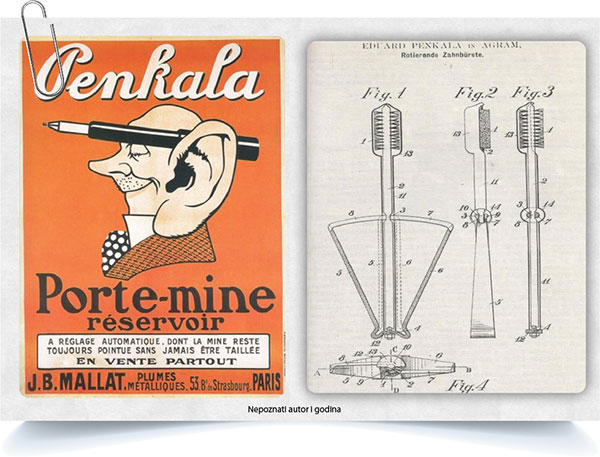
PENKALA - THE AUTOMATIC PENCIL
Eduard Penkala was born in Liptovský Mikuláš (modern day Slovakia). He attended the University of Vienna and the Dresden Technical University, graduating from the latter in 1898, and going on to earn a doctorate in organic chemistry. He then moved with his wife and family to Zagreb (which was then in the Kingdom of Croatia-Slavonia) and became a naturalized Croat. Penkala became renowned for further development of the mechanical pencil (1906) – then called an "automatic pencil" – and the first solid-ink fountain pen (1907). Collaborating with an entrepreneur by the name of Edmund Moster, he started the Penkala-Moster Company and built a pen-and-pencil factory that was one of the biggest in the world at the time. This company, now called TOZ-Penkala, still exists today.
Krapina is a town in northern Croatia, in the Zagorje region. The region has been inhabited since the Palaeolithic Age. Krapina is famous for an archaeological discovery in 1899, where a population of Neanderthals was discovered by geologist, archaeologist and palaeontologist Dragutin Gorjanović-Kramberger. The archaeological discovery on a hill called Hušnjak unearth over eight hundred fossilized remains, along with tools and weapons, making the site one of the most significant in Europe. The whole story can be experienced in the Museum of Krapina Neanderthals.

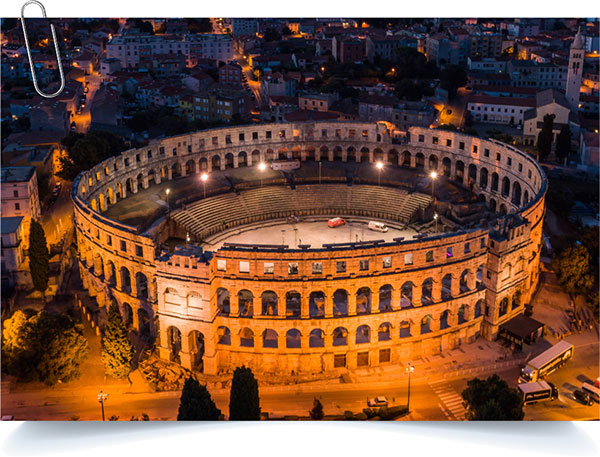
AMPHITHEATRE IN PULA
The amphitheatre in Pula is one of only 3 preserved in the world, which were once the site of gladiatorial fights. Built in the 1st century AD, during the reign of Emperor Vespasian, the Pula amphitheatre is the 6th largest amphitheatre still in existence.
One of the most famous beaches in Europe is located only a short boat ride away from the city of Split. Zlatni Rat (Golden Cape) is a narrow white pebble beach on a promontory near Bol, a small village on the island of Brač. The unique shape of the beach shifts with the changes of tide, the currents, and the wind direction, extending 634 metres out into the sea.
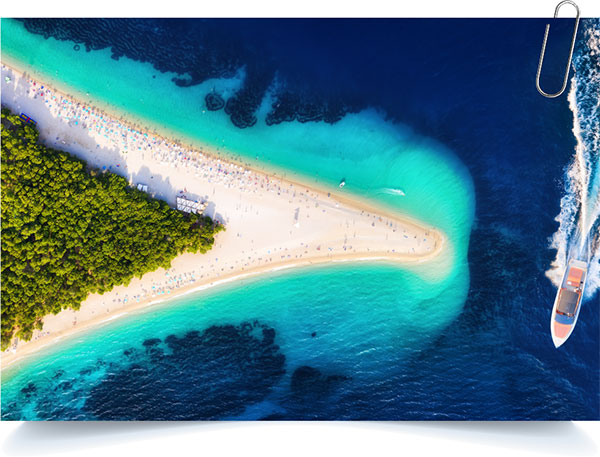
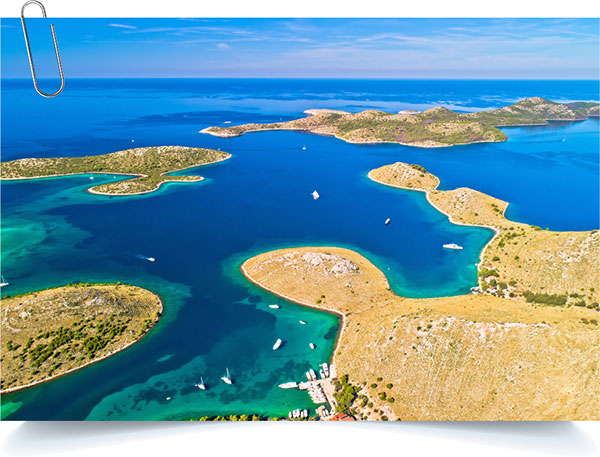
THE KORNATI NATIONAL PARK
The Kornati archipelago is the densest archipelago in the Mediterranean Sea. It is located in the northern part of Dalmatia. The archipelago consists of 140 islands; some large, some small, covering an area of about 320 square kilometres. The archipelago is one of the most popular nautical tourist spots in the Adriatic.
Did you know?
- The Croats first settled the eastern coast of the Adriatic Sea in the seventh century A.D. Tomislav, the first Croatian king, was crowned in the year 925 A.D.
- The White House in Washington D.C. was built with sandstone sourced from quarries on the island of Brač.
- The eighth deepest cave in the world, the Lukina cave (with a total depth of 1,392 m) is situated in the heart of the Northern Velebit National park, at an altitude of 1,475 m above sea level.
- Dalmatian dogs originate from the Dalmatian Riviera. They were “spotted” in a 17th century oil painting hanging in a monastery in Dalmatia – this is thought to be the first record of the Dalmatian breed of dog.
- The first torpedo was constructed by Ivan Lupis Vukić, a retired naval officer, in the 19th. Although similar weapons of war, such as submarine mines, existed some 50 years prior, Lupis Vukić was the inventor of a self-propelled underwater missile.
- Ivan Vučetić- criminologist and anthropologist, was born on the island of Hvar. He was a pioneer of scientific dactyloscopy (hand print identification) and his methods of identification are still used worldwide.
- The Cathedral of Saint Domnius is the oldest serving cathedral in the world. It was built at the beginning of the 4th century, as a mausoleum of Emperor Diocletian, and transformed into a Christian church in the 7th century. Domnius, or, as the Croats call him, Duje, was bishop of the nearby town of Salona, and was martyred by Diocletian in 304 AD. The cathedral is also one of the smallest in the world.
- The parachute was invented by Croatian scientist and inventor Faust Vrančić. Vrančić was born in the town of Šibenik, but spent most of his life in Venice. Having studied the sketch of the parachute by Leonardo Da Vinci, Vrančić designed his own version. It is widely believed that Vrančić performed the first parachute jump experiment, and, therefore, to be the first man to build and test a parachute. He achieved this feat in 1617., as a 65-year old man, by jumping from St. Mark's Campanile in Venice.
- Humans believed that the Moon had an atmosphere, until Croatian scientist Ruđer Bošković proved otherwise. This 18th century physicist, astronomer, mathematician, philosopher, diplomat, poet, theologian, and Jesuit from the city of Dubrovnik is responsible for a number of scientific discoveries. He is best known for his valuable findings in astrology. A lunar crater is named after him.
- The oldest pharmacy in the world is located in Croatia. It was established in the city of Dubrovnik in 1317. And is still open for visitors.


